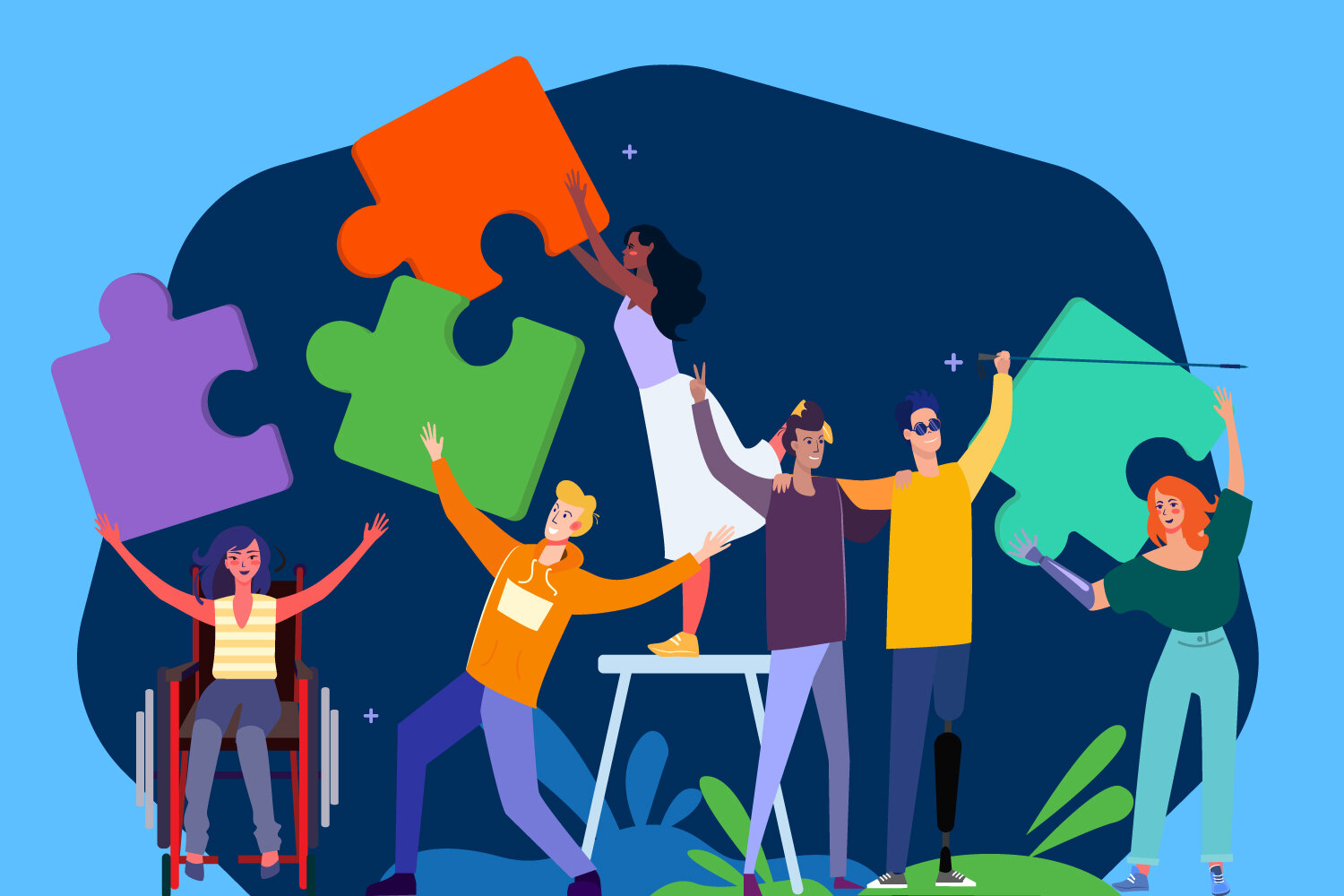How to Foster a True Sense of Belonging for Your Employees with Disability
There is only one way to look at things until someone shows us
how to look at them with different eyes.
—Pablo Picasso
In a recent blog post, we explored how to transform your organization’s commitment to diversity, equity, and inclusion (DE&I) for the long-term. Much of the current DE&I narrative focuses on a handful of more traditionally underrepresented groups. However, one such group—the largest minority in the United States—is often overlooked: people with disabilities.
According to the US Department of Labor (DOL), “diversity encompasses the infinite range of individuals' unique attributes and experiences.” DOL reports that 50 million individuals identify as having a disability. Businesses have a significant opportunity to enhance their competitive edge by ensuring this population is well-integrated into their workforce. Businesses that employ people with disabilities report the following benefits:
Increased employee loyalty and reduced turnover
Reasonable accommodations, with an average cost per individual of approximately $300
Financial incentives such as the Work Opportunity tax credit and Ticket to Work program
The business case for hiring people with disabilities is simply icing on the cake. More importantly, this untapped labor pool has a unique ability to adapt to new situations, contribute to a broad range of viewpoints for increased innovation, and offer fresh insights when problem solving.
Keep reading to learn how you can remove the stigma associated with disability and create an inclusive workplace where your employees with disabilities can thrive.
EMPOWER WITH LANGUAGE
What do you say when you meet a person with a disability? How do you refer to them? And what is the most effective way to communicate and work with them? Here are two approaches for treating your employees with respect and empowering others to do the same.
How do you know which approach to use—people-first language or neurodiversity language? Start with calling the person by name, and when in doubt, ask the person what they prefer.
Here are some additional examples of how to show respect and understanding for people with disabilities.
Do not place a person with a disability on a pedestal for simply having a disability. Avoid terms like “afflicted,” which make assumptions about how the person feels about their disability.
Avoid outdated euphemisms like “wheelchair bound.” Assistive devices assist; they do not define a person.
Do not hang onto someone’s wheelchair or touch other assistive devices, which are not only their property, but in some cases an extension of themselves.
CREATE A SENSE OF BELONGING
Recently we at Cynuria Consulting designed a Disability Awareness course in partnership with SourceAmerica, an organization that creates job opportunities for people with significant disabilities. We outlined the below core strategies to help companies create a sense of belonging for their employees with disabilities.
Engagement. On an organizational level, review all existing policies and programs to ensure the employment environment is accessible to employees with disabilities. This includes facilities, programs, technology, websites, and the benefits and privileges of employment. Create a disability task force and affinity groups to drive advocacy and support.
On an individual level, provide employees with disabilities training opportunities throughout their careers. Create specific goals for improving their employment experience. Most importantly, get to know them for who they are as unique humans, and affirm the capabilities they contribute to the company.
Leadership. Champion people with disabilities as influencers in your organization. Ensure your leadership development initiatives are inclusive of these individuals by:
Creating a succession planning strategy that taps and develops them for positions and career paths in which they are interested
Enlisting the help of a full-time Selective Placement Coordinator to manage recruitment, retention, and promotion
Providing entry- and mid-level employees an opportunity to weigh in when seeking staff input about the organization’s future leadership direction.
ASSESS YOUR NEXT STEPS
Every organization is in a different place in its journey towards inclusion of people with disabilities. Create goals like the above and regularly measure progress so you can move from where you are today to where you want to be.
Ask the following questions of your senior leadership, to begin assessing how well your organization is promoting people with disabilities.
Does our leadership reflect the available talent pool in the marketplace?
Are people with disabilities in our organization advancing at the same rates as others without disabilities?
Do those promoted reflect the available skilled talent in the market across all roles?
Do all employees feel like they are treated fairly, and is our organization committed to advancing diversity and inclusion?
If this quick self-assessment uncovers areas for improvement, you are not alone. At Cynuria Consulting, we believe that the abilities of any employee can be enhanced through learning and human empowerment. We are committed to helping organizations transform their inclusion strategies for people with disabilities. Contact us today to learn more.




